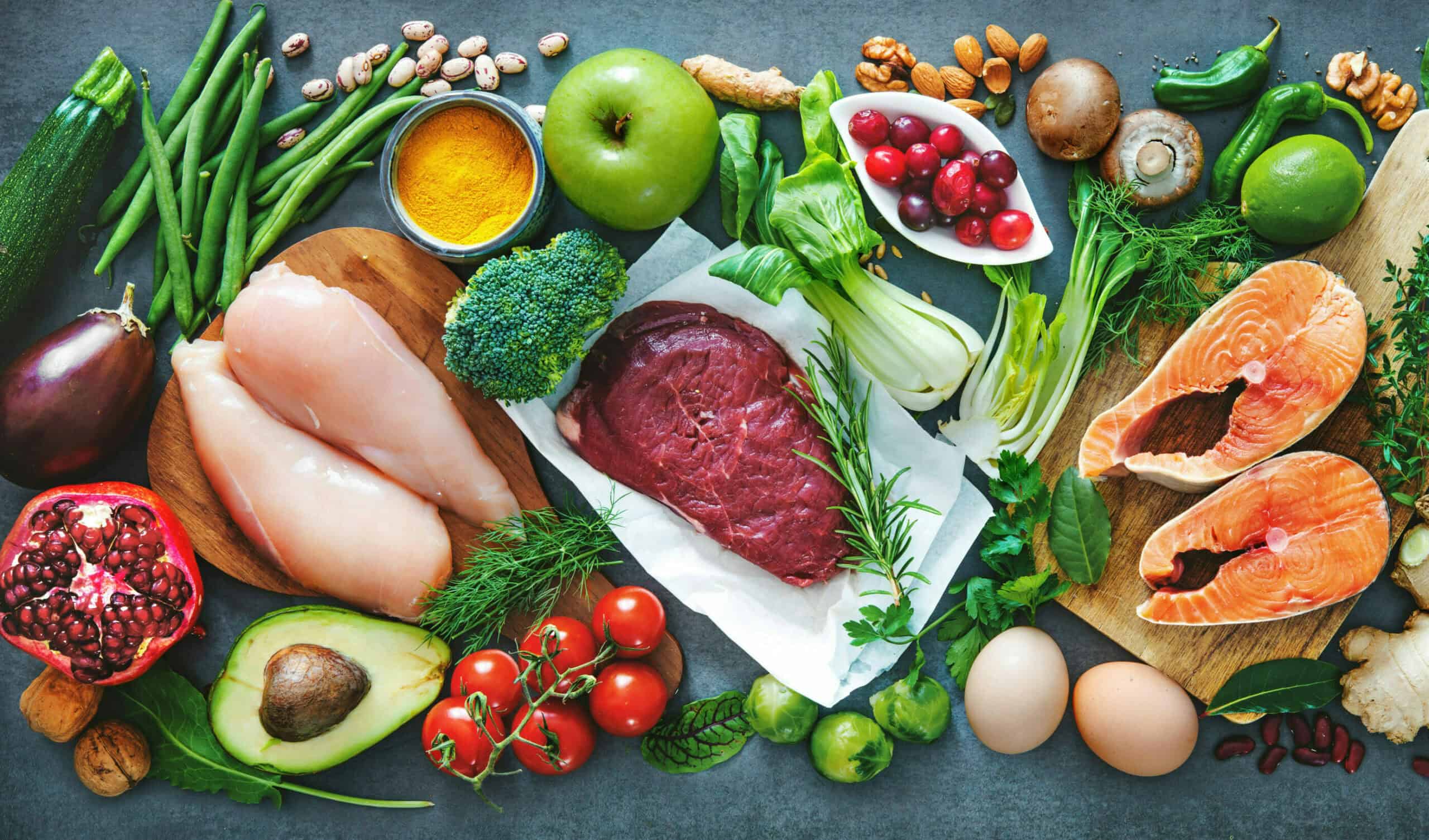The 80s and 90s were full of nutrition nonsense. Which of these dieting myths duped you?
“Low-fat is best”
“Avoid eggs—they’re high in cholesterol”
“Diet soda will make you thin”
Today, we’re taking down one more promotion from the past that might still be influencing you today. Are you still falling for this one?
“6 small meals a day is better for your health and weight loss.”
Let’s put on our thinking caps and see whether this dieting advice bears scrutiny.
What Happens When We Eat 6 Small Meals a Day?
If you’re still stuck on six meals a day, consider these four facts:
1. Frequent eating leads to high insulin levels
When we eat (especially when we eat carbs in particular), our digestive system gets to work breaking down our food into sugar. This sugar enters our blood.
As our blood sugar levels rise, the pancreas produces insulin—a fat-storing hormone that prompts our cells to absorb blood sugar for energy or storage.
Giving our bodies a frequent stream of food can create constant high levels of insulin. This boosts our fat storage and makes fat loss a lot harder.
2. Small servings limit your protein intake
Protein is the building block of muscles. When we exercise, our muscles lose proteins and become damaged.
When muscles are damaged through hard exercise, they build back stronger as long as you consume enough calories and protein to repair the muscle tissue. If you’re lacking adequate calories and protein though, you may experience muscle loss.
The optimal minimum amount of protein per meal is 20 grams. However, when we eat smaller meals more often, it’s harder to hit that minimum protein goal.
3. Grazing leads to overeating
Frequent small meals fail to keep us full, satiated, and nutritionally satisfIed for long. Continuous hunger makes it more likely for us to not only feel deprived each day, but it also can lead to overeating.
Rather than adding a few gallons to your gas tank repeatedly, your car will run better if you fill your tank completely. Similarly, we can function better, physically and mentally, when we enjoy a full and satisfying meal.
If feeling full feels uncomfortable and six small meals feel easier on your stomach, try adding digestive enzymes before your largest meal of the day.
That said, there’s no need to stuff yourself each meal. Eat until you are satisfied, and eat enough to sustain you for the next 3 hours or so.
4. Six meals doubles your time in the kitchen
When was the last time you picked an unhealthy meal to save time? Eating healthy takes dedication and invested time—why add to your load?
Coming up with six different healthy items to eat each day makes consistency harder. Be realistic about where you are right now so that you don’t crash and burn later.
If you’re hoping to lose weight and boost your health, resist the urge to overcomplicate your plan. Make sure your goals—including how many healthy meals you prep a day—are realistic, sustainable, and fit within your schedule.
The Menu Schedule That Works
Instead of 6 small meals, try this:
1. Intermittent Fasting
Typically, when following an Intermittent Fasting schedule, you consume all of your calories and macros within an 8-10 hour window and then fast for 14-16 hours.
Researchers have just begun to scratch the surface of the many health benefits of intermittent fasting. Here’s what the science is saying so far:
Intermittent Fasting increases metabolism and fat burning. It lowers blood insulin and sugar levels and results in healthy weight loss, dramatically lower insulin levels, significantly improved insulin sensitivity, and lowered blood pressure.
Intermittent Fasting also reduces inflammation. It increases growth hormone, which plays a key role in our cell repair and metabolism. Plus, it improves mental concentration and increases energy.
New to Intermittent Fasting? I dive into all the details in my free intermittent fasting ebook that I’d be happy to share with you!
2. Cap your meals at 4 a day
If you’re transitioning away from six meals a day, give yourself time to adjust. Start by cutting down to 4 satiating meals. This slow progression will give your digestive system and habits time to adjust easily.
A typical 4-meal day might look something like this:
- Breakfast: Dave’s Killer Bread with an egg and ½ an avocado
- Lunch: Salad with chicken, pepita seeds, and Primal Kitchen dressing
- Afternoon Meal: Protein shake
- Dinner: Honey garlic salmon, brown rice, broccoli, and sweet potato
3. Eat enough to feel satisfied
Increase your meal size until you find the amount of food you need to feel full and satisfied for at least 3 hours.
If you find yourself hungry between meals, analyze your macronutrients. Certain foods, like simple carbs, are digested much quicker than other foods, like complex carbs, fats, and proteins.
Fill your menu with whole foods and track your macros to maintain nutritional balance throughout the day.
Not sure how to start tracking macros? Check out my step by step guide here.
4. Boost your protein
Make sure that each meal you contains 20 grams of protein. Hitting this goal will help you feel fuller for longer and keep your body from losing muscle mass when you work out.
Shoot for this goal especially during your first meal of the day. Adequate protein earlier in your eating window will help you regulate your hunger all day long.
Clean, organic, or grass-fed animal products can help you reach your protein goals during breakfast. But if those foods don’t appeal to you, pack in healthy protein with some Greek yogurt and fruit. Or try one of my favorite protein shakes.
Start Thriving on 3 Meals
We now know that “grazing” throughout the day is not helpful when it comes to fat loss and blood sugar management. Ditching this myth from the past will improve not only fat loss, but also your blood sugar management.
Really to kick the diet myths to the curb? Join LEAN where you’ll learn the health and weight loss strategies that actually work.
For more health tips you can rely on, sign up for my weekly newsletter here.





